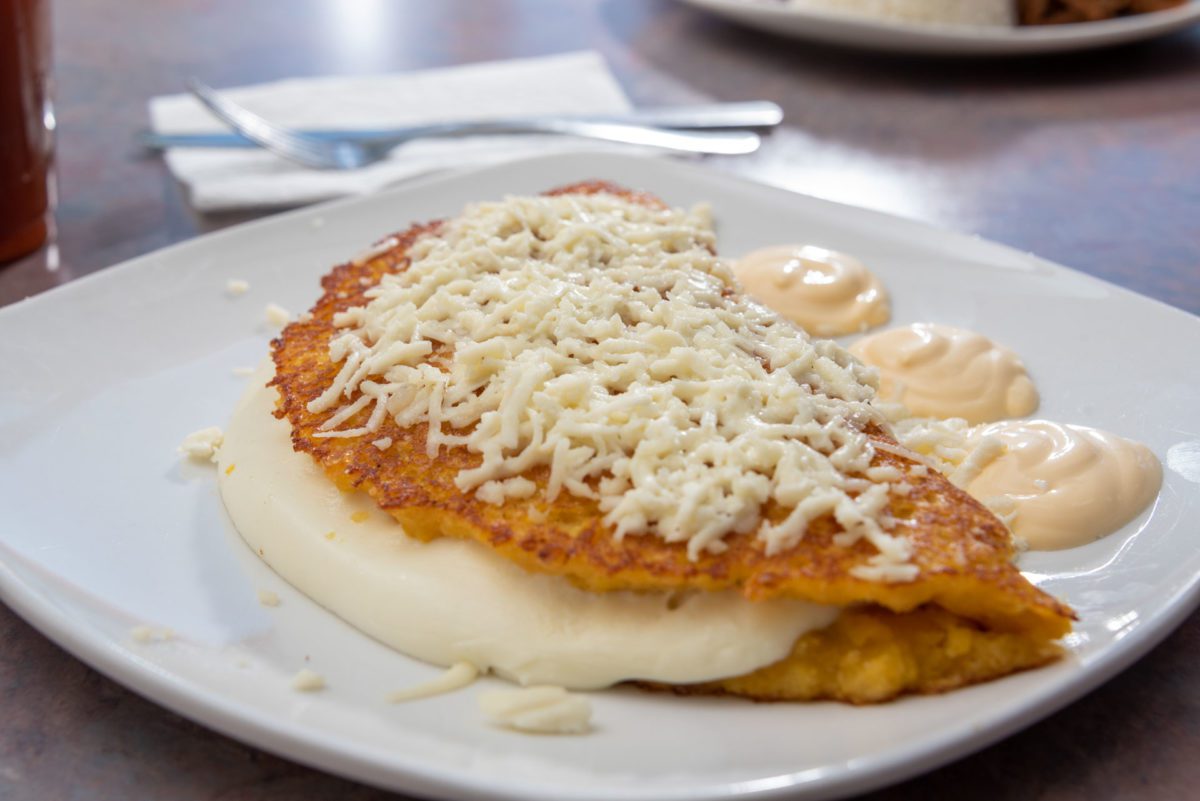Aragua de Barcelona is a remote and tranquil town on the eastern edge of Venezuela’s vast central prairie. If you’d been there some years back, you might have seen a cozy, welcoming restaurant named El Araguaney and, in the back, you’d have seen a young girl: Carolina Marino.
“As a kid, I used to wake up every morning and run to my mom’s restaurant,” she recalls. “I’d get a plate of empanadas. They were delicious! Years later, I’d work at El Araguaney and bring my own daughter, Elena. I’d hand her empanadas as I worked. That’s where my mother taught me how to cook.”
Marino and her daughter came to Tulsa in 1999, and she opened her own restaurant 20 years later.
But what was she doing during that 20-year span?
“Well, I was dreaming of opening a restaurant,” she says. “I saw people eating at Chinese restaurants, Mexican restaurants, and I thought, ‘Why not Venezuelan?’”
Meanwhile, she worked as a chef in an assisted living center, gaining experience on how to manage a kitchen.
“One day in 2019,” Elena remembers, “she just came up to me and said, ‘Let’s open that restaurant!’ ‘Really?’ I said, and she just said, ‘Let’s do it!’ Two weeks later, she’d bought this place and was starting to decorate.”
Every morning, three hours before opening time, Marino arrives at the restaurant. She starts by making arepas, a corn cake eaten in Venezuela long before the Spanish came. She takes cornmeal, carefully mixes in water and salt, and puts it on the griddle.
“Simple to say,” she says, “but not simple to do. It’s a lot of work.”
She also makes the shredded beef used for several dishes, including the empanadas and the patacones. She broils chuck steak along with beef broth, onion and garlic, then she shreds it and seasons with garlic, oregano, onions and red peppers.
Isn’t she giving away her trade secrets?

Try authentic Venezuelan bites at El Arepaso. 
Cachapas, or corn cakes, come doused in cheese for a savory entrée choice. 
Empanadas and pastelitos are popular picks at El Arepaso. 
The pabellon criollo comes with shredded beef, black beans, sweet plantains and rice. 
Popular Venezulan drinks served include passionfruit juice, papelon con limon (rapadura, water and lemon or lime juice) and the chicha, a boozy conconction made with corn beer.
“We’re not afraid of giving out recipes,” says Elena. “Because as my mom always says, you need the master touch to make it right.” And that’s what Carolina Marino learned in Venezuela.
“I worked with my mother at El Araguaney for 29 years,” she says. “The food we serve here is what I learned there. We make everything from scratch and we make it by hand. It’s all homemade.”
That, of course, includes the brightly colored sauces that give the food its zing.
“The green one, for example,” says Elena, “that’s guasacaca. It has cilantro, onions, garlic, mayonnaise and vinegar. Most Venezuelans put avocado in. We don’t. Our red sauce is simpler. That’s mainly mayonnaise and ketchup.”
When the food is flavored with these sauces, you might find yourself ditching the takeout container you were sure you’d need. (Portions are very generous.) A prime example is the pepito. It’s a popular Venezuelan street snack and a lot like a North American hero sandwich. It has grilled ribeye, onion, corn, bell pepper, lettuce, tomato, cheese and shoestring fries. Yes – shoestring fries top the sandwich that one customer said “looks like a college dorm room exploded.” But a liberal amount of the red and green mayo-based sauces make it so tempting that you’ll probably eat it all.
Another saucy standout is the patacon. Invented in the steamy seaport of Maracaibo, this could be the world’s most unusual sandwich, as it uses bananas as the bread.
“We make this after the customer orders,” explains Marino. “We cut a plantain in half and put it in the fryer for three minutes. Then we mash it flat and fry it for two minutes more.”
It’s stuffed with that shredded beef and topped with a slice of ham and lots of red mayo.
“Oh, and you must try the cachapa!” Elena chimes in. “It’s sweet and savory. You get a sweet corn pancake topped with melted cheese. It’s super yum!”
There are a lot more tasty items on the menu. But go and try these and you’ll be back for more.
Elena sums it up nicely: “It’s tasty. It’s different. You can enjoy it.”































